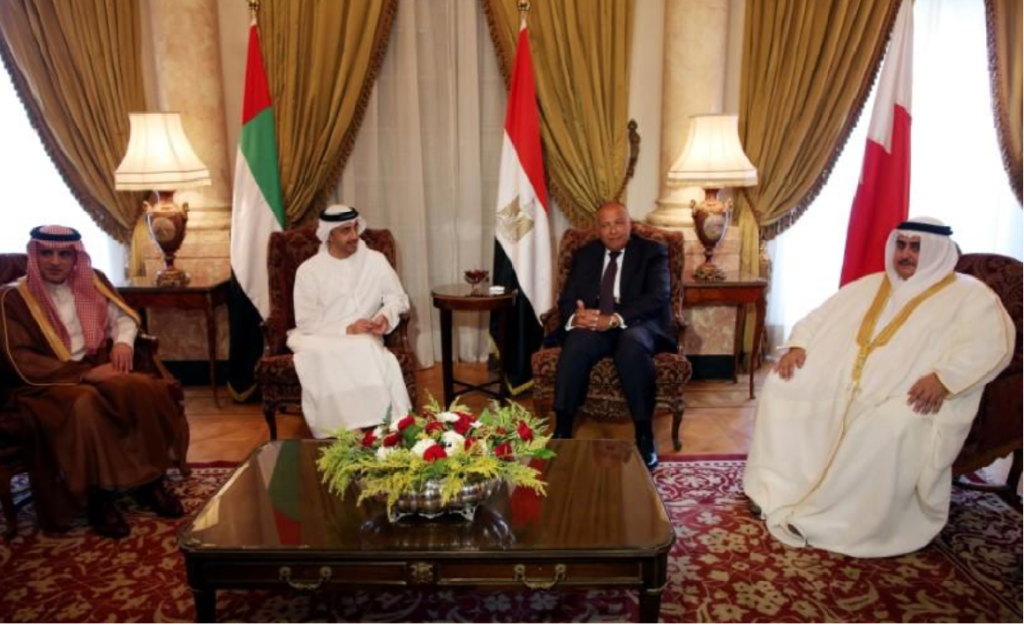There is no doubt that the Qatari crisis is far from resolving as some promote or hope that it would be a passing summer cloud. With the failure of foreign ministers visits and presidents’ mediation, the four states seem to stick to their demands.
Why do we expect the crisis period to prolong? Because it is an old and cumulative one – complaints about Doha have been pouring for almost a long 20 years.
Despite old disputes, the statement issued by the four states at the beginning of June represents a new development – it is the first confrontation and the most serious one. This was clearly expressed via cutting diplomatic and consular ties and prohibiting transit and traffic. From that day on, the confrontation has been escalating and the speech of the Emir of Qatar a few days ago expressed escalation and not bridging. For this, the crisis will probably last for months.
So far, who has won and who has lost in the last round? I think that states such as Egypt and Saudi Arabia are used to offenses and hostile media campaigns.
Qatar, however, is an affluent and immune state that has been attacked by extremist groups such as al-Qaeda only once in the nineties. It doesn’t have a large population density or religious and cultural diversity threatening its stability, unlike Bahrain. It is on the safe side with two US military bases protecting it from invaders.
Qatar has two images: a real negative one similar to other hostile Arab states and a fake media one that depicts it as a modern, positive, young and moderate state, enjoying freedom and independence from foreign pressures.
Few people are aware that Qatar’s image is fake, or at least exaggerated.
In the current crisis, the conflict has fallen to its lowest levels. Doha is the damaged party because the other party is used to media distortion and targeting. For the first time, Qatar’s name is attached to terrorism and extremist intellect.
No matter how much the government tries to recruit more public relations firms in Washington to repair its image, it won’t succeed because the damage has already occurred and the other party is still able to deliver its message. As for Qatari media efforts, they mainly focus on consumed and repeated messages that governments are used to.
In the Arab region, the tactic of the Qatari propaganda machine relied on outdated means such as exploitation of the Palestinian cause and linking it to the crisis. But this attempt failed. The machine, also, tried to convince citizens of these countries that their governments are biased and false. Qatar found little sympathy because the four states have disrupted groups hired by it from commentators, preachers, and academics.
The four states’ control has undermined the Qatari government investment in these people who were silenced. It is not a matter of freedom of speech as much as standing against lobbies and public relations illegally recruited by a foreign government – majority of regimes prohibit receiving funds from foreign governments for sponsoring political activities.
Eventually, the crisis will come to an end but we can’t determine when and how – maybe next year.
Qatar is the state under political pressure in the region and will reach a deadlock because the four states, along with the majority of the region, can no longer bear the attitude and damage caused by the Qatari government.
Most of the region’s governments consider that Doha is jeopardizing their stability. Therefore, responding by targeting Qatar is legitimate and necessary. Is Doha able to bear the risks and consequences of its policies?
The continuation of the crisis and the rejection of mediation and pressure are all indicators that Qatar is playing a dangerous game and has a choice to make: let go of its policy or risk its existence.
